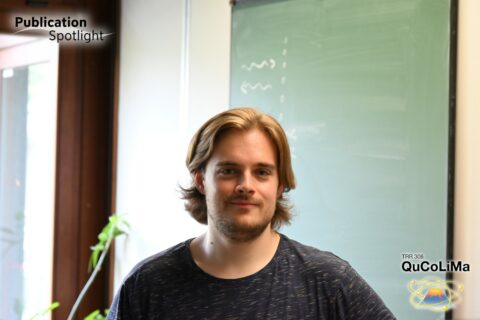Reflect on that: cooperative quantum arrays
by Max Gmelch (SAOT)
What is the perfect mirror? From a physical point of view, it is a device that reflects any incoming light without loss. Everyday materials that are e.g. found in your bathroom are far away from that benchmark. But even high quality optics for lab applications don’t do the job completely.
But if we abandon the conventional idea of what a mirror is, we might find what we are looking for. Nico Baßler recently published on “Linear optical elements based on cooperative subwavelength emitter arrays”. On a theoretical level, he investigated the collective behavior of tiny light-sensitive spots, e.g. atoms, that are arranged in a periodic and ultra-narrow assembly. Due to their mutual proximity, they may interact with each other and consequently may collectively respond to incident light, as his calculations show.
This cooperative behavior can be tuned to enable full reflection of light, rendering the spot array as a perfect mirror. Beyond that, its properties can also be tuned to realize other optical devices. One further example is the use as a polarizer, i.e. it can alter the direction of the light wave’s oscillation.
In the end, those arrays will not replace any mirror in our everyday life. But they may become essential in the quantum scale, namely as components in tiny quantum optical assemblies as they may be found in quantum computers.
Nico works at the Institute of Theoretical Physics I at FAU Erlangen-Nürnberg and in the Cooperative Quantum Phenomena Research Group at the Max Planck Institute for the Science of Light. His supervisors are Kai Phillip Schmidt and Claudiu Genes. His work is part of QuCoLiMa Area C: Quantum cooperativity induced by interactions.
The original publication can be found in Optics Express.


